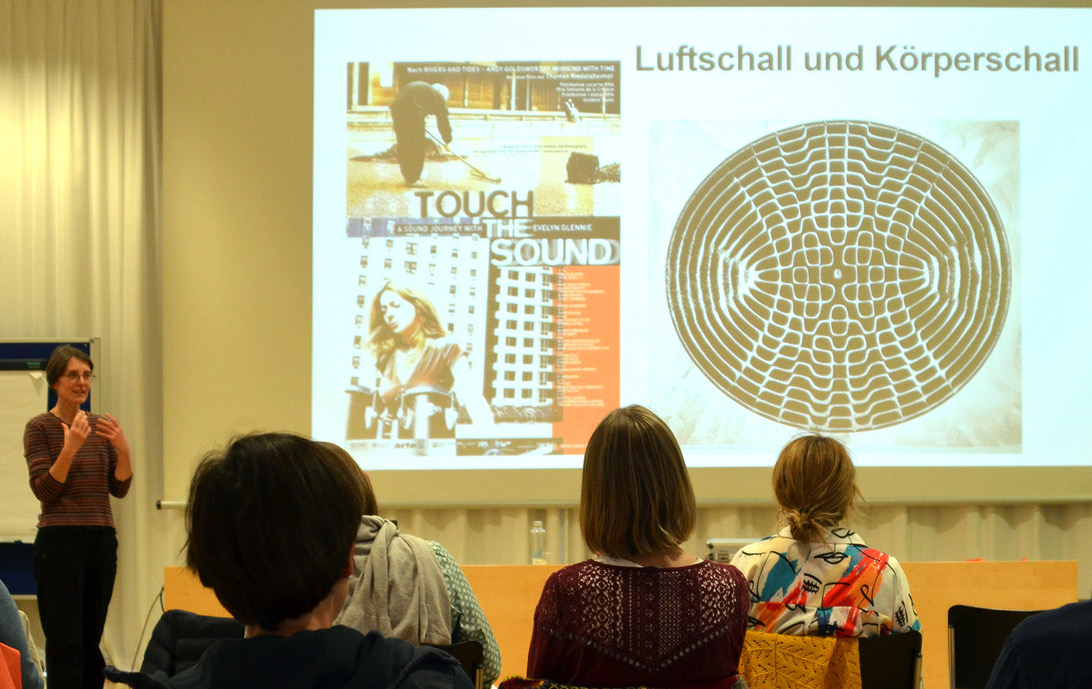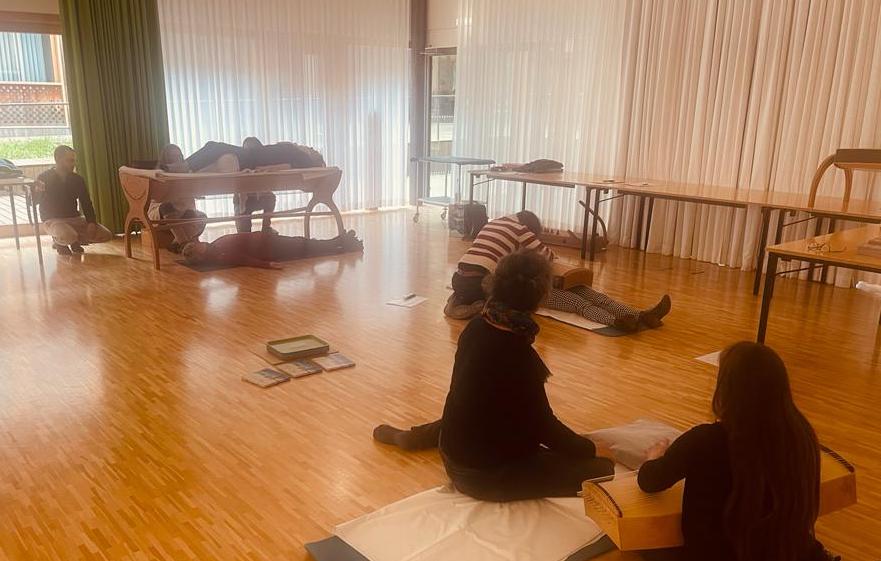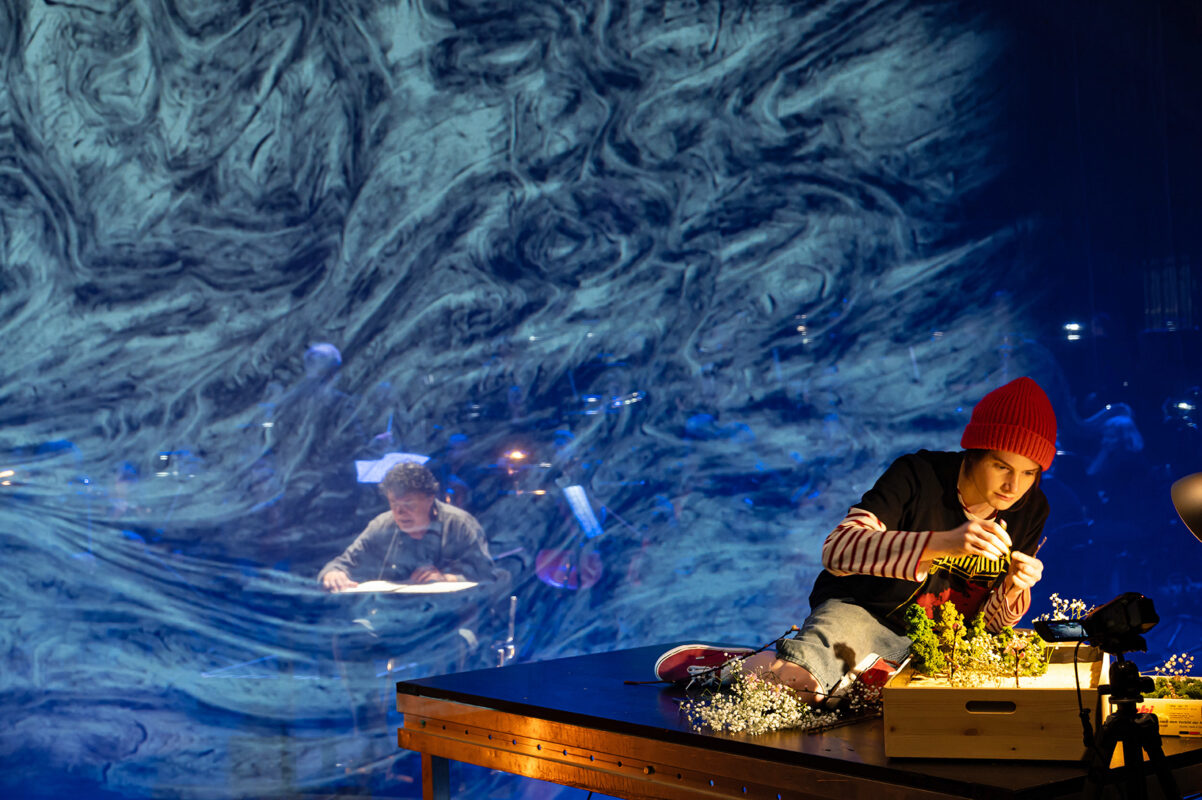Interdisciplinary music therapy approaches
Presentations and workshops gave participants at a conference in Basel an understanding of interdisciplinary methods in art and music therapy.

The integration of music therapy into everyday clinical practice has played a major role in its development from a rather derided wellness treatment to a medically recognized therapy. It is hard to imagine neonatology, palliative medicine, oncology, neurorehabilitation and other departments without it. In Switzerland, the instrument maker and music therapist Joachim Marz at the Bellikon Rehabilitation Clinic He has been a pioneer in this field for a long time, together with his colleague Susanne Bossert. Since last year, he has continued the strongly practice-oriented specialist conferences that have become a tradition in Bellikon at Rehab Basel, now together with music therapist Mireille Lesslauer, who works there. This year's topic: "The importance and effects of interdisciplinary methods of art and music therapy", and thus the interdisciplinary cooperation between music therapy and art therapy in neurorehabilitation.
Music therapy can play to its strengths on two levels in everyday life at a rehabilitation clinic. On the one hand, it can accompany or help shape psychological processes that are indispensable when patients have to find their way back into life after accidents or health-related strokes of fate. Secondly, it can support the retraining of bodily functions in a very practical way, for example when it comes to restoring bodily symmetries after a stroke.
Zeitgeist and physical experience
At the Basel conference, discussions about the extent to which emotions are biologically predetermined showed that music psychology cannot completely escape the current, ideologically influenced debates in emotion psychology. Analogous to the rejection of biologically determined gender identities in gender research, younger female researchers advocate ideas of an exclusively culturally formed emotionality. In the lecture by Hamburg art therapist Judith Revers, the will to respect the complexity of intercultural communication processes became clear, for example in music therapy with refugees. However, there is a risk of falling back into ideas of the fundamental exotic otherness of foreign cultures that were thought to have been overcome. This is where radical left-wing concepts meet nationalistic ideas.

However, the conference in Basel also showed that music therapy in another area is moving in a direction that fortunately seems completely contrary to the zeitgeist: while current music production is becoming increasingly disembodied with digital production and the emergence of artificial intelligence instruments, this form of therapy offers exactly the opposite: special instruments that make it possible to experience sound and music in the flesh. This could be felt and heard in Basel in a workshop with monochords that you can lie on or that can be placed on your body. Vibrations are not just heard, but perceived directly through the body's resonance.
Hearing as a bridging function
The sense of hearing is the first to develop in adolescents, and it is the last to decay in the peripheral regions of death. Music therapy therefore has particular strengths, not least in the treatment of coma patients. One focus of the conference was on research in this area. Katharina Braune, a physiotherapist working at Rehab Basel, is collaborating with music therapy and nursing as part of a master's thesis to investigate the influence of the lying monochord on the consciousness of patients who are in a state of unresponsiveness or reduced consciousness as a result of severe brain injuries in several individual case studies.
Dorothea Dülberg, teaching music therapist at the German Music Therapy Society, showed how "intermedia crossovers as fluid changes of methods and media can stimulate and support transformation processes". In her workshop, she combined music, painting, poetry and movement in space to create a multidimensional tracing of inner voices.







